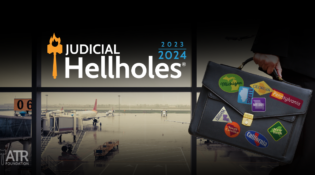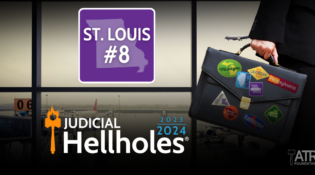‘PHANTOM DAMAGES’ CONTRIBUTE TO PRICE TAG OF LAWSUIT ABUSE
A variety of civil justice abuses contribute to the growing litigation costs, none more so than judges permitting “phantom damages” to be introduced in their courtrooms. “Phantom Damages” exist any time lawsuit recoveries are calculated using the dollar amount a patient was billed for a medical service instead of the amount the patient, their insurer, Medicare, Medicaid, or workers’ compensation actually paid for treatment. For example, a hospital may bill $20,000 for an emergency room visit, while the amount the hospital actually receives after adjustments may be $8,000. The $12,000 difference is not owed or ever paid in the real world.
The use of inflated billed amounts only increases the overall cost of the judicial system, spreading the financial burden on the backs of every American through higher costs on goods and services. These amounts become a driving factor for settlements or jury awards in personal injury cases when juries are asked to assign a verdict of three to four times the amount of the inflated medical bills.
But, juries are only told the “phantom” large dollar amount billed. They are not informed of the actual amount paid by a patient or his or her insurer. They’re not made aware of the financial interest of medical finance companies or their impact on health care costs. Consequently, we see higher and higher phantom damage awards and settlement amounts based on exaggerated numbers intended to produce a larger payout for trial lawyers.
Juries’ lack of access to critical evidence is allowable in more than 36 states, contributing to the dramatic rise in settlements and verdicts with phantom damage awards.
Twenty-five states plus DC allow full recovery of phantom damages under most or all conditions, with little opportunity for defendants to question juries about whether medical bills reflect a reasonable market value.
Eleven states allow juries to consider evidence of phantom billed numbers, but courts reduce awards post-trial to actual amounts paid. While a slight improvement from those allowing full recovery of phantom damages, this approach demonstrates a lack of trust for juries by withholding the reality of the medical care costs at issue.
ARCHAIC STATUTE CREATES “PHANTOM DAMAGES”
It is the collateral source rule in most jurisdictions that creates “phantom damages.” This is an archaic, century old evidentiary rule where the courts discussed the “prophylactic effect” on the wrongdoer. The courts feared the wrongdoer would not be deterred from similar acts in the future if the wrongdoer benefitted from reduced damages by of collateral sources.
The collateral source rule provides that in computing damages, a jury is not permitted to consider compensation the plaintiff received for the injury from sources other than the defendant, even if the payments partially or completely mitigated the plaintiff’s actual monetary loss. Evidence of payments coming from third parties are barred from the jury’s ears, allowing an injured party to receive an award to cover lost wages or medical expenses even when already reimbursed for those losses from a third party. More than a dozen states have a collateral source rule that applies in all civil cases and 18 states have a rule with limited exceptions. The remaining states have addressed the issue through a variety of reforms, including a requirement that damage awards be decreased by the amount paid by third-parties, or at the very least, the states allow such evidence to be considered by the jury.
The collateral source rule encourages litigation because it creates incentives to sue, even if a person has already received or is receiving substantial compensation. Such litigation, and the attendant transactional costs, such as attorneys’ and expert witness fees and court expenses, may increase insurance premiums and needlessly use judicial resources.
Over time, this concept is outdated where the wrongdoer is not ultimately paying these inflated damages, rather, insurance consumers are paying them with increased rates. This contributes to the rising “tort tax” paid by Americans, especially in Judicial Hellholes across the country.





